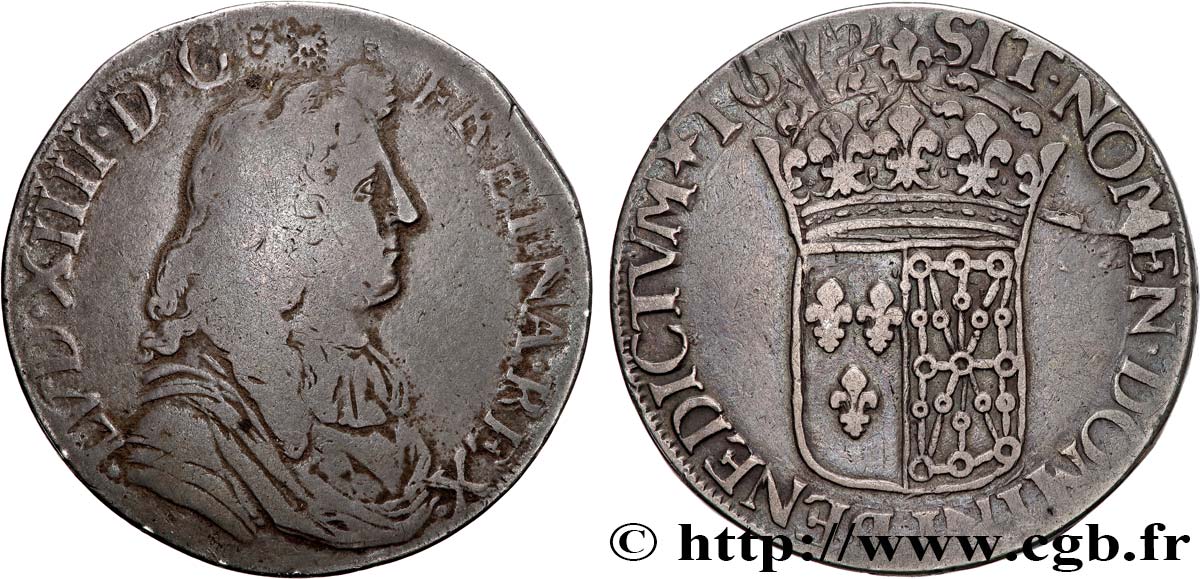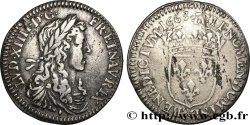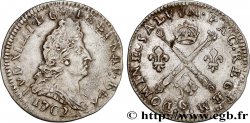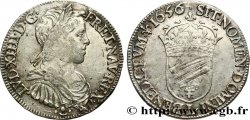Live auction - bry_765546 - LOUIS XIV "THE SUN KING" Écu de Navarre, portrait à la cravate courte 1672 Saint-Palais
Чтобы принять участие в торгах, вы должны войти в систему и стать подтвержденным участником аукциона. Войдите, чтобы сделать ставку. Ваш аккаунт будет подтвержден в течение 48 часов. Не ждите до закрытия торгов, чтобы зарегистрироваться.Сделав ставку на данный товар, вы вступаете в юридическое соглашение на покупку выбранного товара и нажатием кнопки «Сделать ставку» подтверждаете принятие вами условий интернет-аукционов cgb.fr.
Ставка может бить сделана только в полном эквиваленте евро. Торги закроются согласно времени, указанному в описании товара, все ставки, сделанные после закрытия торгов, учитываться не будут. Не следует откладывать предложение вашей ставки до последнего момента, так как система может не успеть обработать вашу заявку, и ваша ставка не будет принята. Более детальную информацию вы найдёте здесь: FAQ по интернет-аукционам.
Все ставки победителей подлежат комиссии 18%.
Все ставки победителей подлежат комиссии 18%.
| Оценить : | 4 000 € |
| Цена : | 2 500 € |
| Максимальная предлагаемая цена : | 2 500 € |
| Конец торгов : | 06 September 2022 16:42:27 |
| Участников : | 1 Участников |
Тип Écu de Navarre, portrait à la cravate courte
Дата: 1672
Монетный двор / Город: Saint-Palais
Количество отчеканенных монет: 29651
Металл: silver
Проба: 858 ‰
Диаметр: 38 mm
Ориентация осей монеты: 6 h.
Вес: 26,82 g.
Редкость: R3
Комментарии о состоянии
Cet écu est frappé sur un flan large et légèrement irrégulier. Reliefs faibles au niveau du buste du roi. De petites stries d’ajustage au niveau du millésime. Le revers a été frappé avec un carré présentant une cassure à droite de l’écu. Monnaie recouverte d’une patine grise de médaillier
Происхождение:
Exemplaire provenant de la vente de la Galerie Numismatique Drouot, 26 octobre 1979, n° 201 et de la collection Charlet
Лицевая сторона
Аверс: легенда: LVD. XIIII. D. G. (SOLEIL). - FR. ET. NAV. REX.
Аверс: описание: Buste drapé et cuirassé à droite de Louis XIV, avec la cravate de dentelle, la chevelure longue.
Аверс: перевод: (Louis XIV, par la grâce de Dieu, roi de France et de Navarre).
Обратная сторона
Реверс: легенда: .SIT. NOMEN. DOMINI. BENEDICTVM (MM) 1672.
Реверс: Описание: Écu couronné mi-parti de France et de Navarre.
Реверс: перевод: (Béni soit le nom du Seigneur).
Комментарий
Ce type monétaire fut le dernier frappé dans la Monnaie de Saint-Palais. Il ne fut frappé qu'en 1672 à partir de carré utilisant le poinçon d'effigie à la cravate gravé par Jean Warin. Le 28 juillet 1672, un poinçon d'effigie fut déposé par Warin au greffe de la Monnaie de Paris et était destiné à la Monnaie de Toulouse, hors cet atelier ne frappa jamais d'écu avec ce poinçon. Il est probable que le poinçon destiné à la Monnaie de Toulouse, qui fut remis le 4 août 1672 au régisseur général Claude Thomas, fut déposé à la Monnaie de Saint-Palais. Cette hypothèse a été avancée pour la première fois par Christian Charlet, "Une utilisation à Saint-Palais, en 1672, d'un poinçon d'effigie destiné à la Monnaie de Toulouse ?", BSFN, juin 1994, p. 888-892. Christian Charlet et Emmanuel Henry se sont particulièrement intéressés à ces écus de Saint-Palais. D’après les travaux de Fernand Arbez, 29.651 exemplaires ont été frappés pour un poids total de 3.296 marcs 1 once 21 deniers. Exemplaire issu de la même paire de carrés que l’exemplaire de la vente The Bru Sale, 9 décembre 2011, n° 189. Un article spécifique de Christian Charlet consacré à cette monnaie et cette série a été publié dans le Bulletin Numismatique de janvier 2021. Une mise au point sur le poinçon d’effigie est en cours et sera publier par Christian Charlet et Arnaud Clairand. Le poinçon d’effigie n’est pas celui de Toulouse, mais bien un poinçon expédié depuis Paris.








 Cообщить об ошибке
Cообщить об ошибке Распечатать страницу
Распечатать страницу Отправить мой выбор
Отправить мой выбор Задать вопрос
Задать вопрос Consign / sell
Consign / sell
 Информация
Информация









